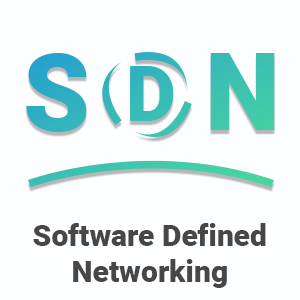


Traditional networking controller system is very tedious to manage which is based on old, rigid commands and consoles. Thus, to overcome the issues of speed and automation software defined networking (SDN) comes into picture.
A software defined networking (SDN) technology is an approach to network management which enables the speed and automation in order to improve the network performance, simple, flexible with less administrative work. SDN helps to make the system easier and less tedious to perform the tasks.
SDN is an open technology and more programmatically efficient comparing to old networking systems. SDN is a flourishing architecture that is transforming industries with its approach to cloud computing and multi-tenant and network management.
The major difference between traditional and software defined networking is its software-based network. Where traditional networks rely on switches and routers whereas the SDN is based on virtual level through control plane.
Basically, traditional networks unable to meet the networking requirements like dynamic scalability, central control and management, handling of network traffic, server virtualization traffic in data centers.
To overcome such issues, open source communities came together to define the networking approach and hence the concept of SDN came into picture. As the name suggested, SDN is implemented through software where networks are controlled by software application and SDN controller.
SDN is a software layer thus it provides reduced manual efforts, dynamic scalability, and central management of network devices.
A software defined networking architecture defines how a networking and computing system can be built using a combination of open, software-based technologies and commodity networking hardware that separate the SDN control plane and the SDN data plane of the networking stack.
Mainly the SDN architecture consists of 3 main layers i.e., application layer, control layer and infrastructure layer.
SDN Applications: SDN Applications are programs that communicate behaviors and needed resources with the SDN Controller via application programming interfaces (APIs). In addition, the applications can build an abstracted view of the network by collecting information from the controller for decision-making purposes. These applications could include networking management, analytics, or business applications used to run large data centers. For example, an analytics application might be built to recognize suspicious network activity for security purposes.
SDN Controller: The SDN Controller is a logical entity that receives instructions or requirements from the SDN Application layer and relays them to the networking components. The controller also extracts information about the network from the hardware devices and communicates back to the SDN Applications with an abstract view of the network, including statistics and events about what is happening.
SDN Networking Devices: The SDN networking devices control the forwarding and data processing capabilities for the network. This includes forwarding and processing of the data path.
The SDN architecture APIs are often referred to as northbound and southbound interfaces, defining the communication between the applications, controllers, and networking systems. A Northbound interface is defined as the connection between the controller and applications, whereas the Southbound interface is the connection between the controller and the physical networking hardware. Because SDN is a virtualized architecture, these elements do not have to be physically located in the same place.
• Email us – contact@click2cloud.net
• See website – https://www.click2cloud.com/
• Watch our videos :https://www.click2cloud.com/videos.php
• Past Events: https://www.click2cloud.com/past-events/past-events.php
• Codefest 2021: https://www.click2cloud.com/codefest/
• Read our Blog's – https://www.click2cloud.com/blogs.php
• Follow us on Twitter– https://twitter.com/click2cloudinc
• Find us on LinkedIn – https://www.linkedin.com/company/click2cloud-inc-
• Subscribe on YouTube – https://www.youtube.com/channel/UCjVgly_5QMuNZQh2I2FkHQQ
Software defined networking architecture is a gem which not only benefits the large and small organizations with its network’s requirements but also provides the better visibility of issues, security, higher efficiency, better performance, data storage, time management, reduces the administrative loads, provides speed and automation.